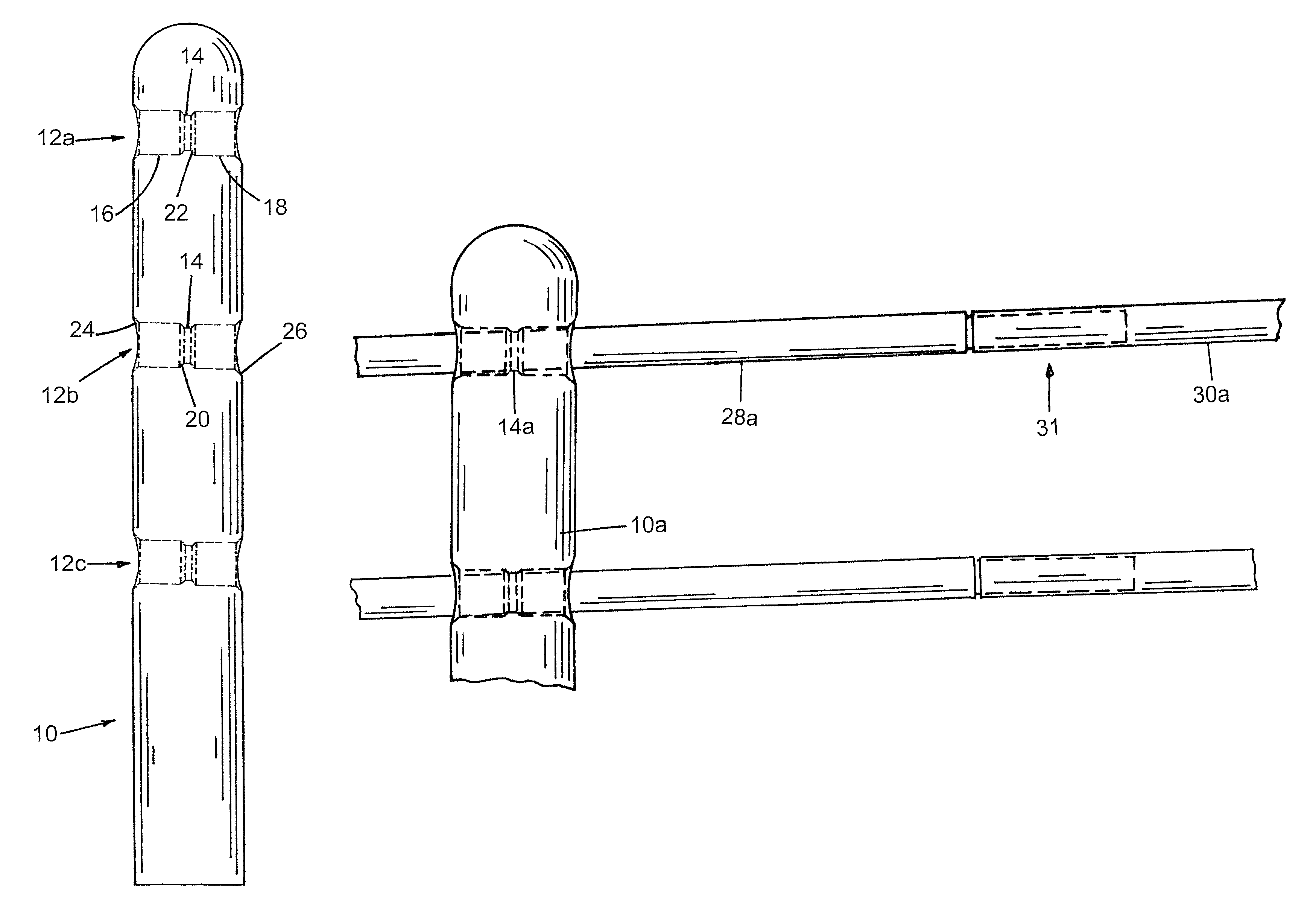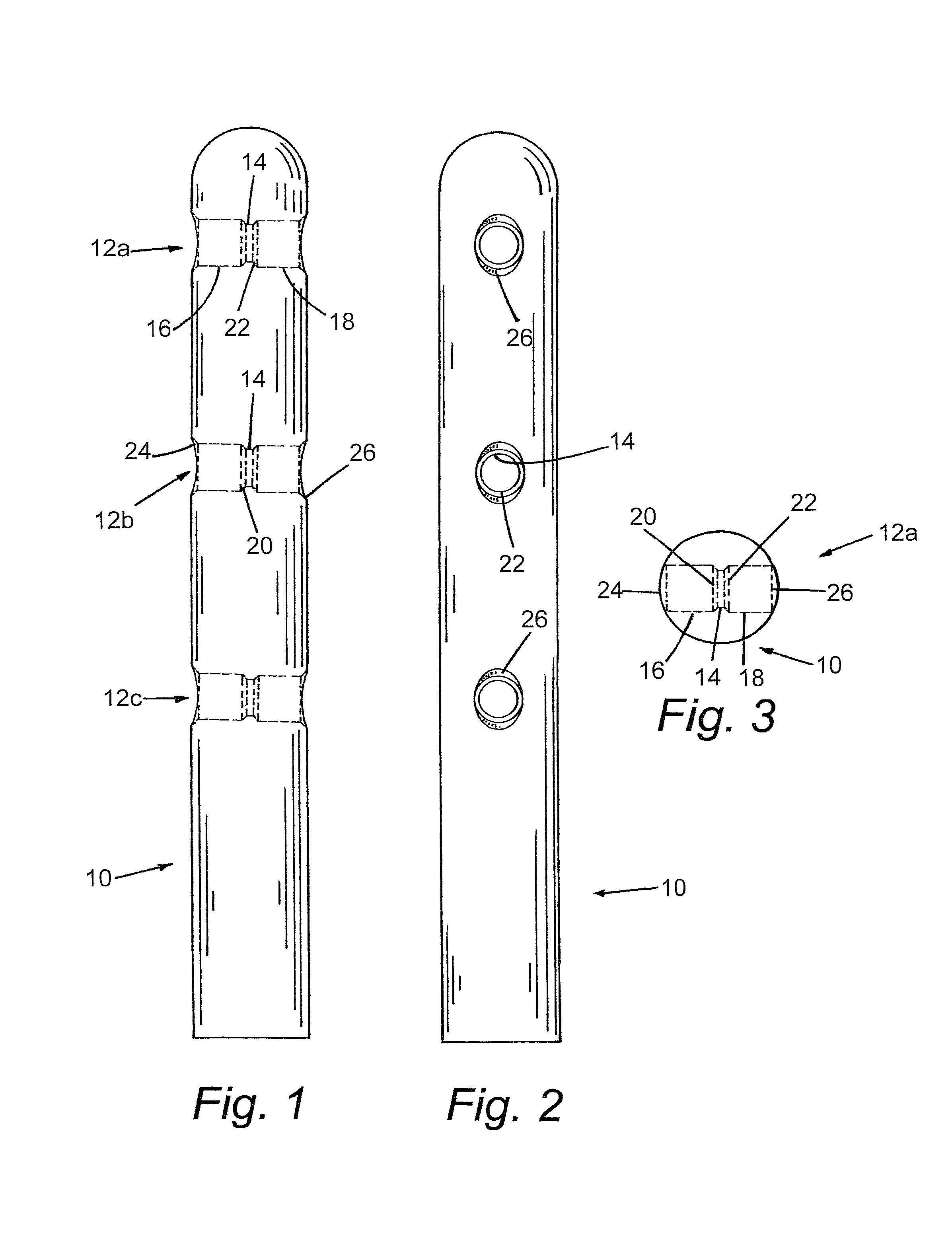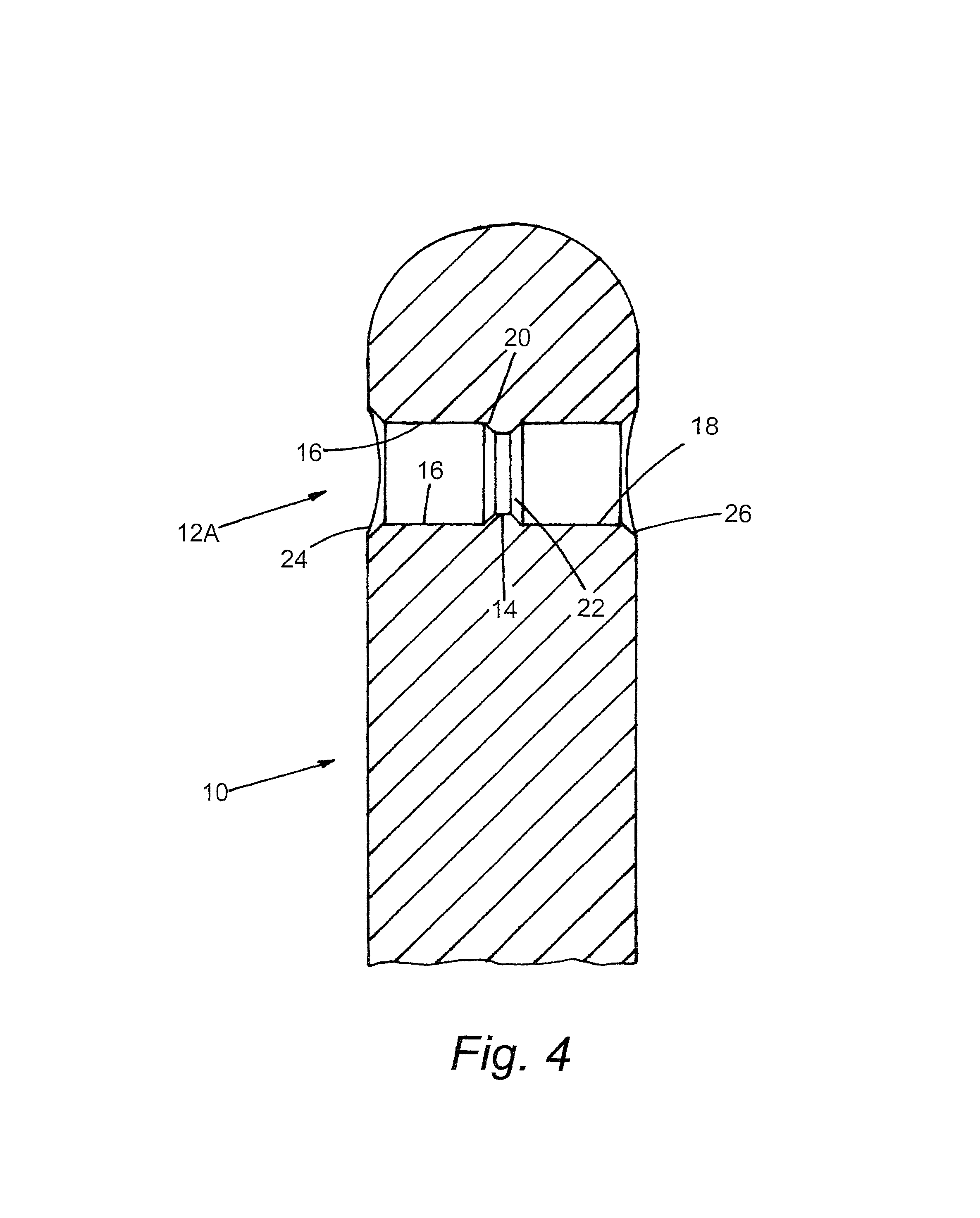Fence post
a fence post and post technology, applied in fencing, building types, construction, etc., can solve the problems of inability to manufacture identical finished posts, inconvenient installation, and inability to fit horizontally, so as to achieve convenient installation
- Summary
- Abstract
- Description
- Claims
- Application Information
AI Technical Summary
Benefits of technology
Problems solved by technology
Method used
Image
Examples
Embodiment Construction
[0015]Illustrated in FIGS. 1-4, generally at 10, is a post representing a preferred embodiment of the present invention. The post 10 has three perforating holes 12a, 12b, and 12c. Each of the holes 12 includes a central section 14 having a smaller, first diameter, a first flanking section 16 of a larger, second diameter and a second flanking section 18 also of a larger, second diameter. In the preferred embodiment of the post 10, a first inner beveled section 20 transitions between the central section 14 and the flanking section 16 and a second inner beveled section 22 transitions between the central section 14 and the flanking section 18. Also in the preferred embodiment of the post 10, a first outer beveled section 24 flares outwardly from the flanking section 16 and a second outer beveled section 26 flares outwardly from the flanking section 18.
[0016]As illustrated in FIGS. 5-7, a plurality offence rails 28 and 30 may be supported by the posts 10. Each rail 28 has a first end of ...
PUM
| Property | Measurement | Unit |
|---|---|---|
| size | aaaaa | aaaaa |
| length | aaaaa | aaaaa |
| diameter | aaaaa | aaaaa |
Abstract
Description
Claims
Application Information
 Login to View More
Login to View More - R&D
- Intellectual Property
- Life Sciences
- Materials
- Tech Scout
- Unparalleled Data Quality
- Higher Quality Content
- 60% Fewer Hallucinations
Browse by: Latest US Patents, China's latest patents, Technical Efficacy Thesaurus, Application Domain, Technology Topic, Popular Technical Reports.
© 2025 PatSnap. All rights reserved.Legal|Privacy policy|Modern Slavery Act Transparency Statement|Sitemap|About US| Contact US: help@patsnap.com



